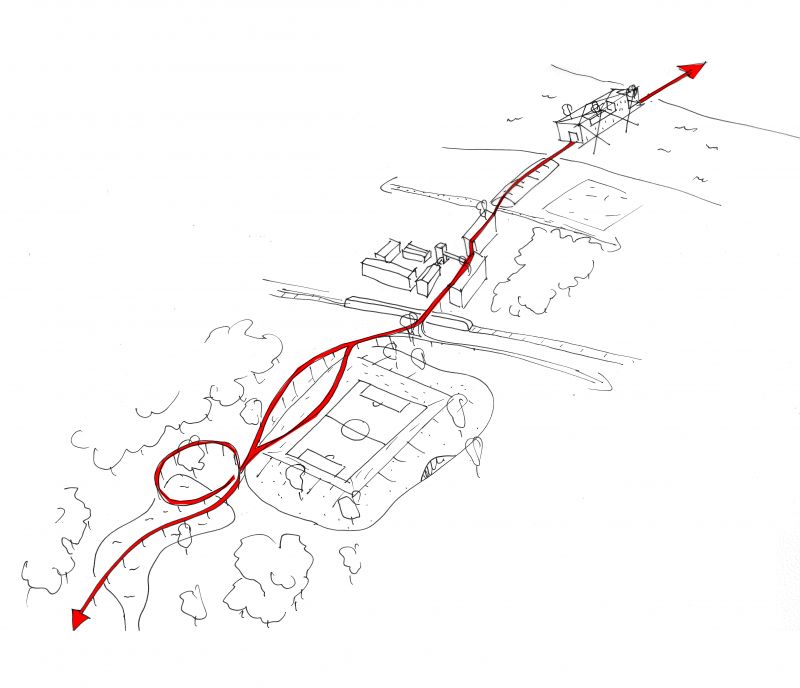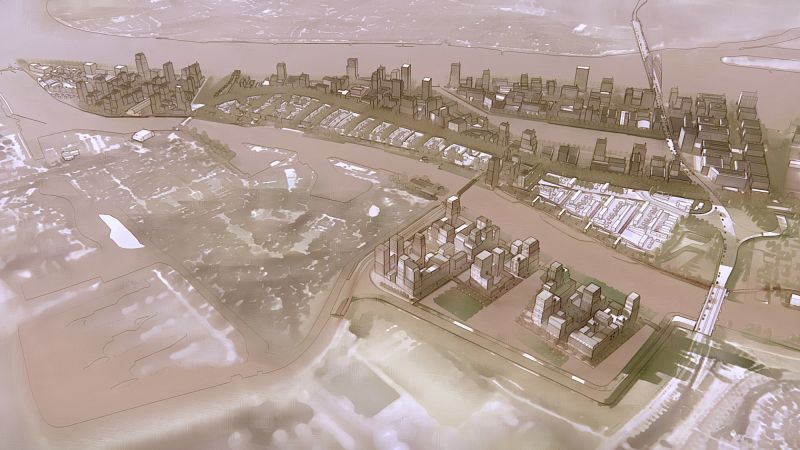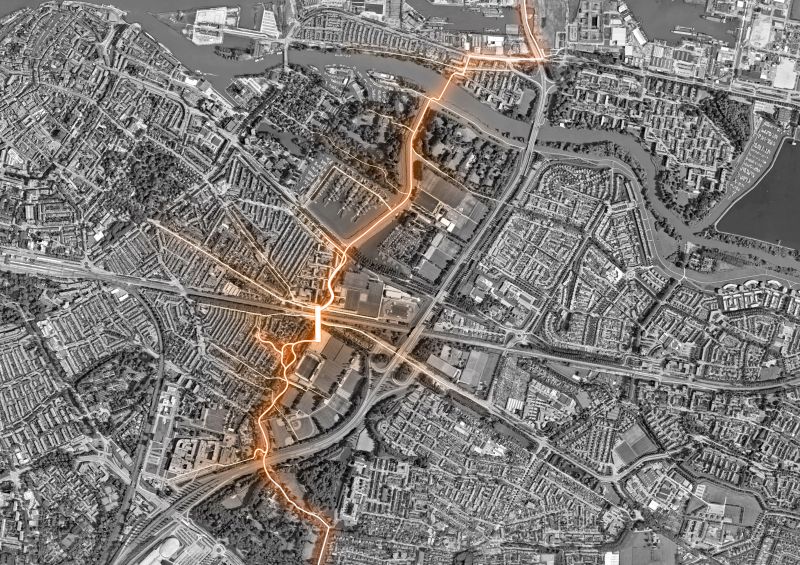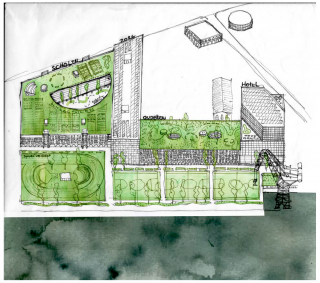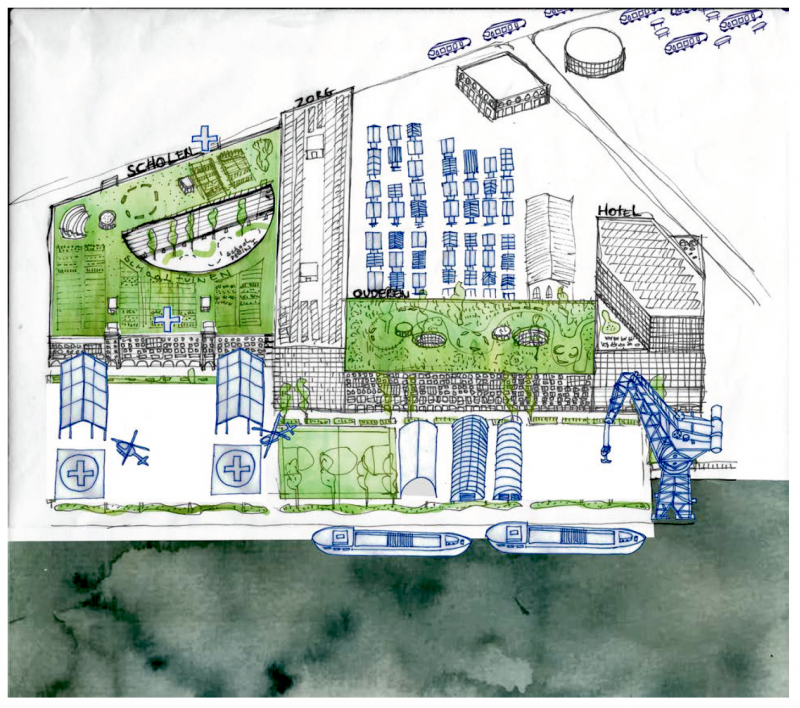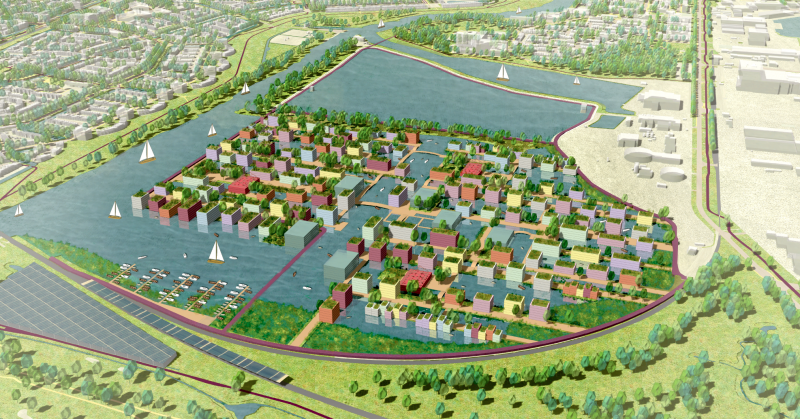But the higher-situated district De Staart, which lies outside the dikes, may provide a better and safer alternative – if it is converted into a large-scale temporary shelter.
What is the best way to set up De Staart to function as a safe haven in the event of flooding? And how can the city use the resources this takes as sensibly as possible? Not just for the exception, but also for other problems Dordrecht needs to solve?
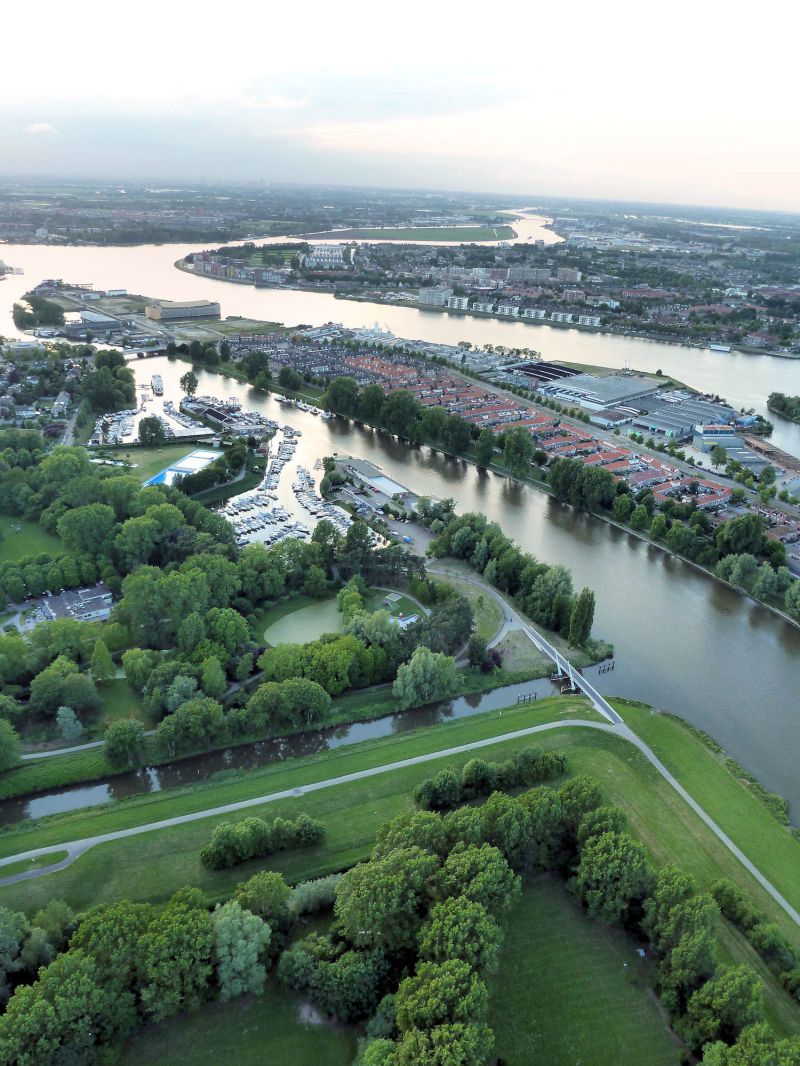
In IABR–Atelier Dordrecht, the IABR and the city of Dordrecht examine ways to use water safety as a leverage for a new and widely supported sustainable urban development strategy. They look for possibilities to turn De Staart into a safe haven in case Dordrecht needs one, as well as a location in which both (part of) the city’s housing challenge is met and truly sustainable urban development is realized in the best possible manner.
The Atelier is led by landscape designer Adriaan Geuze (West 8 Urban Design & Landscape Architecture), who curated the second IABR, The Flood, in 2005. Geuze was born in Dordrecht.

werkshop IABR–Atelier Dordrecht
Vulnerable
Because the island of Dordrecht is vulnerable to flooding, the authorities have been working on the development of a so-called ‘multilayer safety strategy’ for many years. This may also involve evacuation in the event of extreme storms, which can only be predicted a short time in advance. In the worst-case scenario, it is estimated that only 20,000 of Dordrecht’s 120,000 inhabitants will be able to flee the island on time. The people left behind in the flooded area are advised to take refuge on the upper floors of buildings, which the safety strategy calls ‘vertical evacuation’. But it is hard for that many people to survive in the city’s attics for any serious amount of time and evacuating them from the tops of buildings is also relatively complicated.
Evacuation to areas outside the dikes
Fortunately, there is a possible alternative – one that involves better conditions that reduce the risk of casualties – and that is to evacuate people to higher ground outside the dikes. De Staart, the district east of Dordrecht’s historical city center, between the Wantij waterwayand the Beneden-MerwedeRiver, meets these conditions. And because the area is easily accessible from the water, it is ideal for the next step of the evacuation: getting people to safety at other locations in the country. However, this alternative has not yet been sufficiently researched. It is as yet unknown how many people De Staart can accommodate. And people are not eager to evacuate to areas outside the dike, either: intuitively, it feels unsafe – running towards the water rather than away from it.

Workshop IABR–Atelier Dordrecht
Connection with other challenges
Due to its location, De Staart is eminently suitable as a large-scale shelter in the event of flooding. But it’s a complicated area. Half of De Staart is currently residential – a socially vulnerable residential area partly located on a former illegal dump – and the other half is an industrial zone, with many chemical companies. There is a waste incineration plant that supplies heat to the heat network, a water company, a major reservoir and a penitentiary. And this in a unique location, between two rivers, near the historical city center and with national park De Biesbosch just around the corner.
Therefore, anyone that considers the future setup of De Staart cannot but wonder about the future prospects of this unique but complex area. And this is best done against the background of the major housing challenge Dordrecht faces – space for at least 6,000 more homes must be found within the existing city – and the need to create new jobs in manufacturing industry as well as room for all of the interventions needed for the energy transition. Only looking at all of this in conjunction will allow us to get to grips with the real challenge.
Water Safety as Leverage
The IABR–Atelier Dordrecht investigates how to set up De Staart as a safe, self-sufficient shelter to use in the event of imminent flooding, in such a way that the approach can serve as leverage for the initiation of truly sustainable urban development that will help to meet the housing challenge the city faces, that will make room for the next economy after the energy transition, that will ensure good accessibility, and that will reconnect the city of Dordrecht with water and nature.
The IABR–Atelier Dordrecht is a collaboration of the IABR and the city of Dordrecht. The lead designer is Adriaan Geuze ((West 8 Urban Design & Landscape Architecture).
Five distinct research by design commissions have been given to VenhoevenCS, Studio Donna van Milligen Bielke, EGM Architects, West 8 and PosadMaxwan

